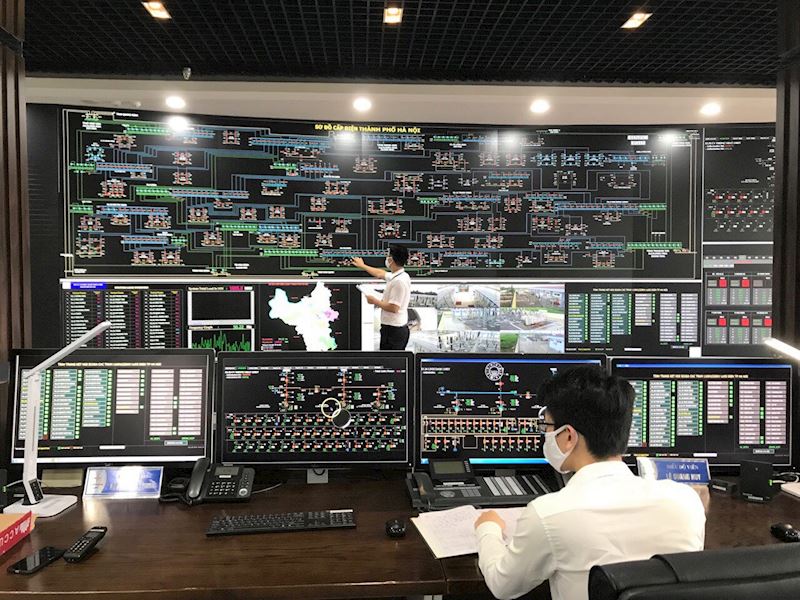For EVNHANOI, the smart grid will help improve the power supply reliability and energy efficiency, reduce costs through improving operational efficiency and information management, etc. Labor costs, operating activities have been also minimized thanks to the application of electronic meters/smart meters and technologies that allow data collection, monitoring and control of devices on the power grid remotely via telecommunication networks. (RF, mobile, etc.).
For customers, the smart grid helps to monitor the power consumption of devices at different times in real time, thereby proactively selecting equipment and adjusting behavior in electricity usage to save costs. Besides, the application of science and technology in business and customer service will bring customers interesting experiences when using the services of the Capital’s Electricity industry.

EVNHANOI completely digitizing the dispatching work - a preconditional step to build a smart grid.
• Management and monitoring of SCADA/DMS (Supervisory Control and Data Acquisition/Distribution Management System): A combination of real-time monitoring, data collection and control systems, based on collected data, the system implements DMS distribution grid management problems (such as circuit prevention, capacity flow, grid operation optimization, etc.). Monitoring the performance of power grid components on a large scale, helping management units get accurate information to make timely decisions to avoid incidents, improve the capacity and reliability of the power grid. Key components of the smart grid include:
• Solutions for information and communications technology integration (Information and communications technology integration): A collection of hardware (server equipment, switches, mobile communications, wireless, communication via power grid, etc.) and software solutions (ERP, - Billing & Customer Information System) to help support the information exchange process, improve the operational efficiency of organizations and enterprises.
• The management system of renewable energy sources (RES) connected to the power grid, has the function of analyzing and forecasting the load demand as well as the system's capacity to respond to and appropriately adjust the amount of capacity. The system helps to balance power supply and consumption through automatic control of loads using power supplies, including distributed and renewable sources.
• Distribution grid management: A collection of hardware devices (line sensors, substation sensors, automatic substations, etc.) and software solutions (Geographic information system (GIS), outage management system (OMS), etc.) to increase power quality, increase equipment use efficiency, limit power loss as well as reduce troubleshooting time.
• Advanced metering infrastructure: Including smart meters, hardware and telecommunication infrastructure for 2-way data transmission between the meter and the power supplier, and systems Software systems (HES - Head End System, MDMS, Automated meter reading (AMR), Advanced Metering Infrastructure (AMI), etc) provide both power supply companies and customers with many outstanding utilities such as: collect, store and analyze electricity usage data in real-time, support complex electricity tariff over time, analyze load consumption, prevent fraud, increase efficiency in charge collection and debt management, etc.
• Customer-side systems: Hardware and software solutions (Customer Relationship Management (CRM), Customer Information System (CIS), Customer Management Information System (CMIS)) help manage and analyze customer interactions and customer data with the goal of improving business relations with customers; support customers in managing power consumption effectively and economically with energy management systems, storage devices, displays, smart devices, smartphone applications, online interactive channels.
Currently, EVNHANOI has built a detailed roadmap to build a Smart Grid in the period of 2021 - 2025 with groups of solutions: operation management, technical management; Business, customer service and asset management, human resource management. The safe, continuous and stable power supply plays a significant importance in economic development and social security. Smart grid helps improve the reliability of power supply during operation as well as transparently disclose business activities to customers. In addition, the smart grid has the capacity to integrate with renewable energy, supporting the development of clean energy, contributing to reducing polluting emissions and protecting the environment.